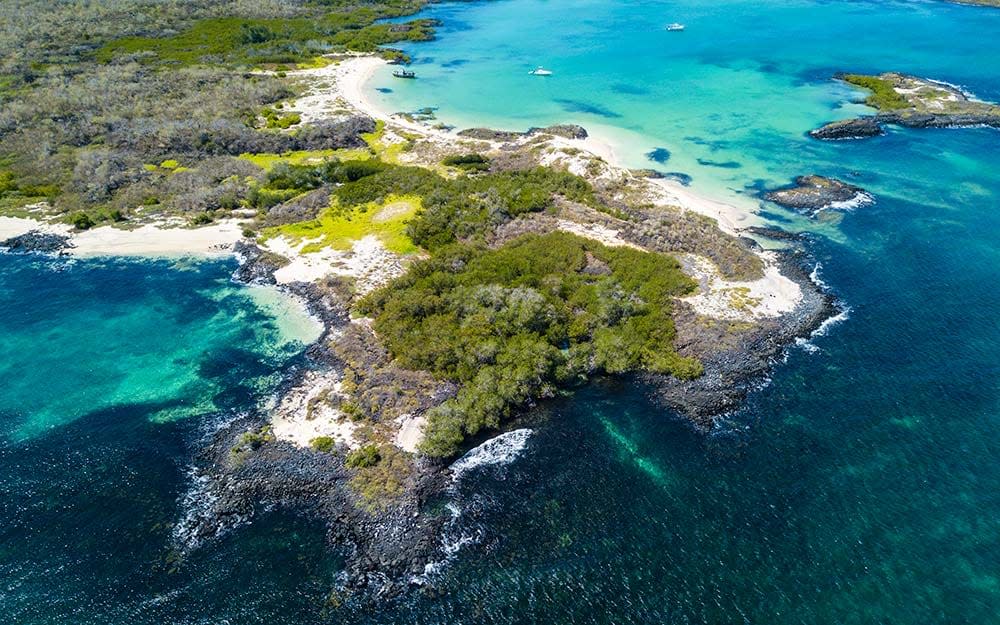Galapagos Islands to reopen to tourists after wildlife blooms during pandemic

The Galapagos Islands, the showpiece of Ecuador’s tourism industry and one of the world’s wildlife wonderlands, is set to gradually reopen to visitors in the coming weeks.
The country announced lockdown measures on March 12, closing its borders to foreign travellers three days later. One of the South American countries worst hit by Covid-19, Ecuador has confirmed 62,380 cases to date and 4,821 deaths – though only two deaths have been reported on the Galapagos Islands.
Across the country, around 2,520 local travel agencies, hotels and restaurants have ceased to operate. The tourism ministry estimates a loss of $581 million (£465 million) for March and April alone.
On July 1, the government officially reopened the Galapagos National Park, though the lack of flights between Seymour airport, on the island of Baltra, and the mainland made the announcement mainly symbolic.
Sixty beach resorts in Ecuador will open from July 22 as part of a pilot scheme, including those on the archipelago.
Most foreign visitors visit the archipelago of 18 main islands and many smaller islands and islets aboard small and medium-sized cruise vessels. They pay $100 (£80) – or $50 (£40) for those aged under 12 – to purchase a Transit Control Card, which controls numbers and also helps finance public services and conservation programmes.

While the taxes and other income are sorely missed by the tourism-dependent islands, local newspapers have reported an abundance of local wildlife during the quarantine period. Iguanas have been seen walking down high streets and rare bird species have been observed for the first time in urban centres.
“As we see in other parts of the world, nature has taken a break,” says Santiago Dunn of Ecoventura, which operates luxury expedition cruises to the islands.
“In Galapagos, where all of its species are very tame, they have flourished and the numbers have been increasing with episodes such as pods of dolphins entering the bays in towns.”
Dunn says Ecoventura plans to restart in August when commercial flights are due to operate again.
“We will be reducing our guide to passenger ratio from one to 10 to an even more exclusive one to seven. More than 30 per cent of our menus are sourced locally, so we will concentrate on working with local producers to help them restart production to be able to reach or increase that amount.”
The absence of flights to the mainland has led to shortages of basic commodities. The lack of tourist ships could also expose the islands to illegal incursions. In 2017, Chinese poachers were caught off the Galapagos with thousands of endangered sharks, which are used in shark-fin soup.

“It will be interesting to see what impact, if any, the break in tourism has had on Galapagos wildlife and scientists are starting to investigate this,” says Clare Simms of the UK-based Galapagos Conservation Trust (GCT).
“Scientists from Ecuador’s Universidad San Francisco de Quito led by Dr Susana Cardenas are supporting the Galapagos National Park Directorate to study the impacts that the closure of tourism is having on the wildlife and habitats of Galapagos. GCT is supporting through the analysis of plastic pollution on tourist sites, investigating if this will increase or decrease with a lack of tourism activity during Covid closures.”
Several obstacles, including red tape, will need to be resolved to reopen the cruise sector, which was booming prior to the pandemic.
Visitors to Ecuador, including the Galapagos Islands, must present a negative polymerase chain reaction (PCR) test for Covid-19, taken up to 7 days prior to departure. In countries where PCR tests are not available, passengers must agree to take a test at the airport in Ecuador before they travel.
While non-nationals are, in principle, exempt from a 14-day quarantine, the rules currently state that anyone arriving from Quito or Guayaquil – obligatory stopovers for visitors – must comply.
Bankruptcy applications by South America’s two largest airlines, Avianca and Latam, further complicate matters. Latam has indicated that it will restart flights to Baltra in August.
UK tour operators are currently monitoring the situation.
“As the main contribution to the local economy, the possibility of tourists returning to Galapagos is a positive step and should help ensure the continued protection of this unique environment,” says Sarah Bradley, managing director at Journey Latin America.
“We think it is likely to be a slow build, with local and national visitors paving the way. While we do have clients keen to take their holiday of a lifetime to the Galapagos, we must wait for current restrictions on travel to Latin America to be removed.”


